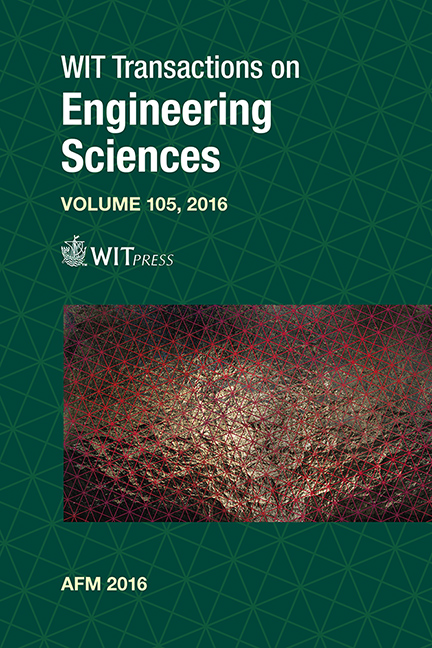Study On Oblique Shock-induced Micro-jet Ejection From A Grooved Metal Surface
Price
Free (open access)
Transaction
Volume
105
Pages
10
Page Range
253 - 262
Published
2016
Size
1,158 kb
Paper DOI
10.2495/AFM160221
Copyright
WIT Press
Author(s)
Y. N. Shi, Q. Zhao, P. Wang, Q. J. Feng, C. S. Qin
Abstract
This work investigates the material ejection from grooved aluminum surfaces in the specific loading conditions associated to oblique shockwaves: one of the shock directions is perpendicular to metal free surface, and another is parallel to the surface. The effects of shock direction as well as groove angle on ejecta production and size distribution are explored. The time evolution of the micro-jet and morphology are simulated using an elastic-plastic hydrodynamic Lagrangian-Remapping Two-step Eulerian method. A new jet breakup model is developed to predict the dynamic fragmentation of micro-jet and the formation of ejecta. The calculated results show that the micro-jet mass accumulation and necking are due to the velocity gradients along the jet stretching direction, which is dependent on the shock direction. For the z-direction head-on shock, the spatial distribution of jet velocity is a linear acceleration near the groove, and the total ejecta mass increases more significantly than another case. In our simulations, micro-jet mass keeps an increase with the groove angle, and the ejecta particle size is micron. The results compare well with the Sorenson’s experiment ones. It is also found that the steady ejecta distributions exhibit a power law scaling with exponents. However, it shows a dramatic difference in the distribution shapes with the shock direction and groove angle variation.
Keywords
micro-jet, oblique shock loading, L-R Two-step Eulerian method, ejection model, ejecta size distribution





